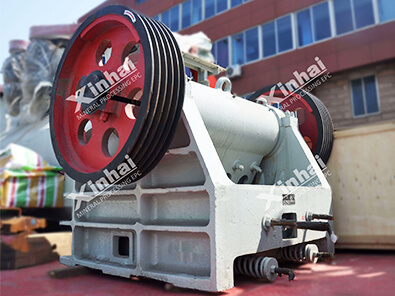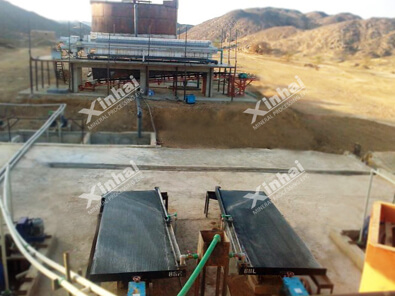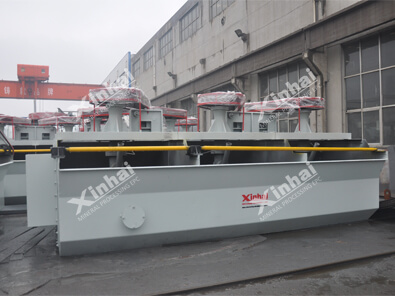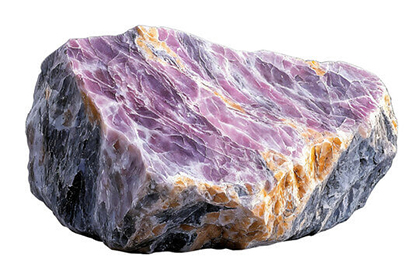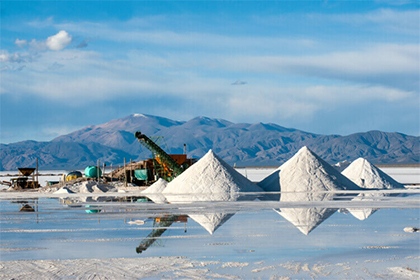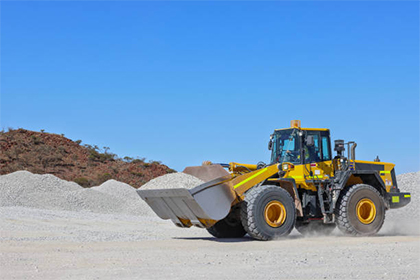How to Extract Antimony from Ore? A Complete Guide
 Laura
Laura
 Apr 03, 2025
Apr 03, 2025
 92
92
If you want to know more details about equipment, solutions, etc, please click the button below for free consultation, or leave your requirements!
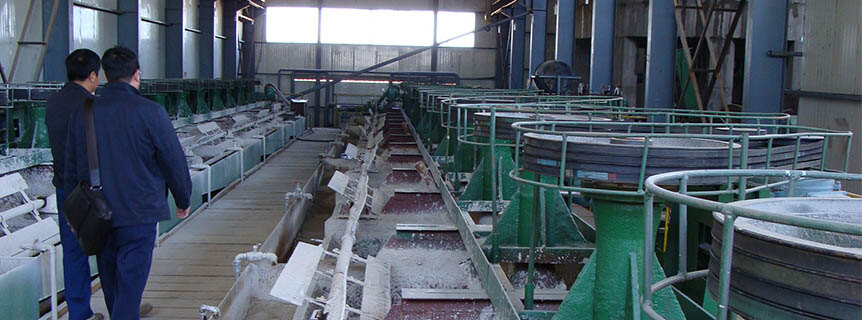
Check the operation of flotation equipment
Antimony is a valuable metalloid widely used in various industries, including electronics, flame retardants, and alloys. The primary ore of antimony is stibnite (Sb₂S₃), which contains significant amounts of antimony. Extracting antimony from ore involves several key processes and specialized equipment designed to maximize recovery and purity. In this article, we will explore how to extract antimony from ore, detailing the main processes and equipment involved.
01 What Is Antimony?
BackAntimony (Sb) is a chemical element with the atomic number 51. It appears as a silvery-white, brittle metal. Antimony is primarily found in nature as stibnite, a sulfide mineral. Due to its unique properties, antimony is essential for applications such as:
a. Flame Retardants: Used in plastics and textiles to reduce flammability.
b. Alloys: Added to lead to improve hardness and mechanical strength, especially in batteries.
c. Electronics: Utilized in semiconductors and certain glass products.
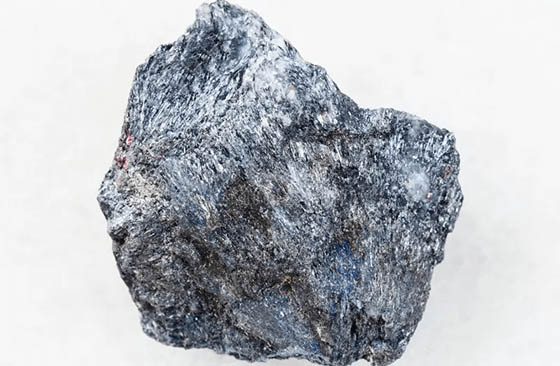
picture of antimony ore
02 What Is the Importance of Antimony Extraction?
BackExtracting antimony is critical for meeting the growing industrial demand. Understanding the extraction process also helps in managing resources responsibly and minimizing environmental impacts.
03 The Process of Extracting Antimony from Ore
BackThe extraction of antimony from ore generally involves several stages: crushing, grinding, concentration, roasting, and smelting. Each of these stages employs specific equipment and techniques.
1. Crushing and Grinding
The first step in the extraction process is to break down the ore to facilitate the separation of antimony from impurities.
a. Equipment Used:
Crushers: Jaw and cone crushers are commonly employed to reduce the size of the ore.
Grinding Mills: Ball mills or rod mills are used to grind the crushed ore into a fine powder.
(More about crushing machines and grinding machines)
b. Process:
Crushing: The mined stibnite ore is fed into crushers, which break it down into smaller pieces.
Grinding: The crushed ore is then ground into a fine powder to increase the surface area, making it easier for subsequent processes to extract antimony.
2. Concentration
Once the ore is crushed and ground, the next step is to concentrate the antimony. This can be achieved primarily through flotation and gravity separation.
1). Flotation
Flotation is a widely used method for concentrating antimony. The process involves:
a. Equipment Used:
Flotation Cells: These are specialized tanks where the separation process takes place. (More about flotation machines)
b. Process:
Creating a Slurry: The ground ore is mixed with water to form a slurry. Collectors are added to selectively bind to antimony particles.
Air Injection: Air bubbles are introduced into the slurry. Antimony particles attach to these bubbles and float to the surface.
Froth Removal: The froth containing concentrated antimony is skimmed off, while the remaining gangue materials sink to the bottom.
2). Gravity Separation
Gravity separation is another method for concentrating antimony based on density differences.
a. Equipment Used:
Jigs, Shaking Tables, or Spiral Concentrators: These devices help separate heavier antimony particles from lighter gangue materials. (More about gravity separation machines)
b. Process:
Separation: The ground ore is fed into the gravity separation equipment, where it is subjected to forces that cause heavier antimony particles to settle while lighter materials are washed away.
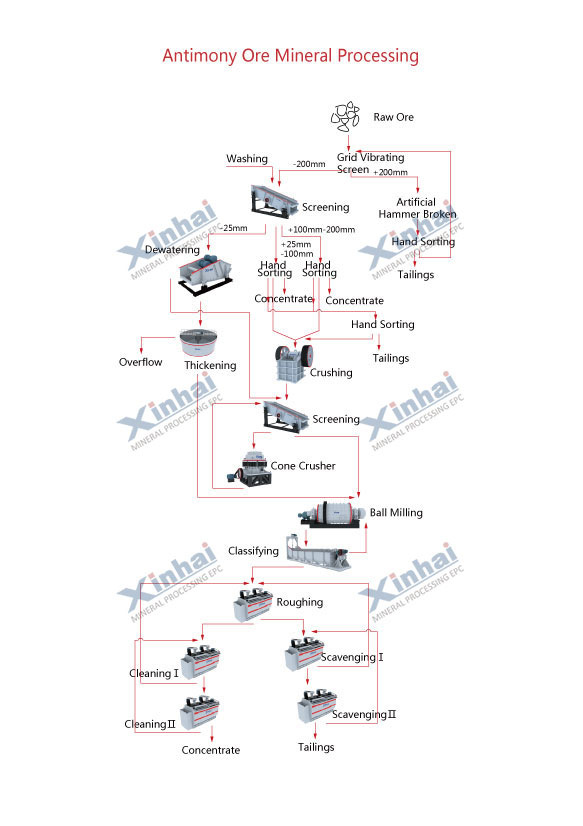
antimony mineral process flow
3. Roasting
After concentration, the next step is roasting, which involves heating the concentrated antimony ore in the presence of oxygen.
a. Equipment Used:
Roasting Furnace: A high-temperature furnace is used for this process.
b. Process:
Conversion: The roasting process converts antimony sulfide (Sb₂S₃) into antimony trioxide (Sb₂O₃), increasing the purity of the antimony.
Removal of Impurities: This process also helps to eliminate other impurities present in the concentrate.
4. Smelting
The final step in extracting antimony is smelting, where the purified antimony is melted and refined to produce the final metal product.
1). Equipment Used:
Smelting Furnace: An electric arc furnace or blast furnace is typically used for smelting.
2). Process:
Heating: The roasted antimony trioxide is placed in the smelting furnace and heated to high temperatures.
Reduction: Reducing agents, such as carbon, may be added to convert antimony trioxide back into metallic antimony.
Casting: Once melted, the liquid antimony is poured into molds to create ingots or other shapes for storage and transportation.
04 Environmental Considerations
BackExtracting antimony from ore can have environmental impacts, including waste generation and potential contamination. To address these concerns, it is essential to adopt sustainable practices:
1. Waste Management: Proper disposal and management of tailings and waste materials are crucial to prevent environmental degradation.
2. Water Conservation: Implementing systems to minimize water usage and prevent contamination of local water sources is essential for sustainable mining practices.
3. Regulatory Compliance: Following environmental regulations helps ensure that extraction processes are responsible and sustainable.
05Conclusion
BackExtracting antimony from ore involves several key processes, including crushing, grinding, concentration, roasting, and smelting. Each step utilizes specialized equipment designed to maximize recovery and enhance purity. As the demand for antimony continues to grow in various industries, understanding the extraction process becomes increasingly important for responsible resource management. By adopting sustainable practices, the mining industry can meet market needs while minimizing its environmental impact, ensuring that antimony remains a vital resource for future generations.
Feel free to contact us and learn more about antimony solutions. Or leave a message and we will reply to you soon!
 +86 18716000713
+86 18716000713 xlyin@xinhaimining.net
xlyin@xinhaimining.net



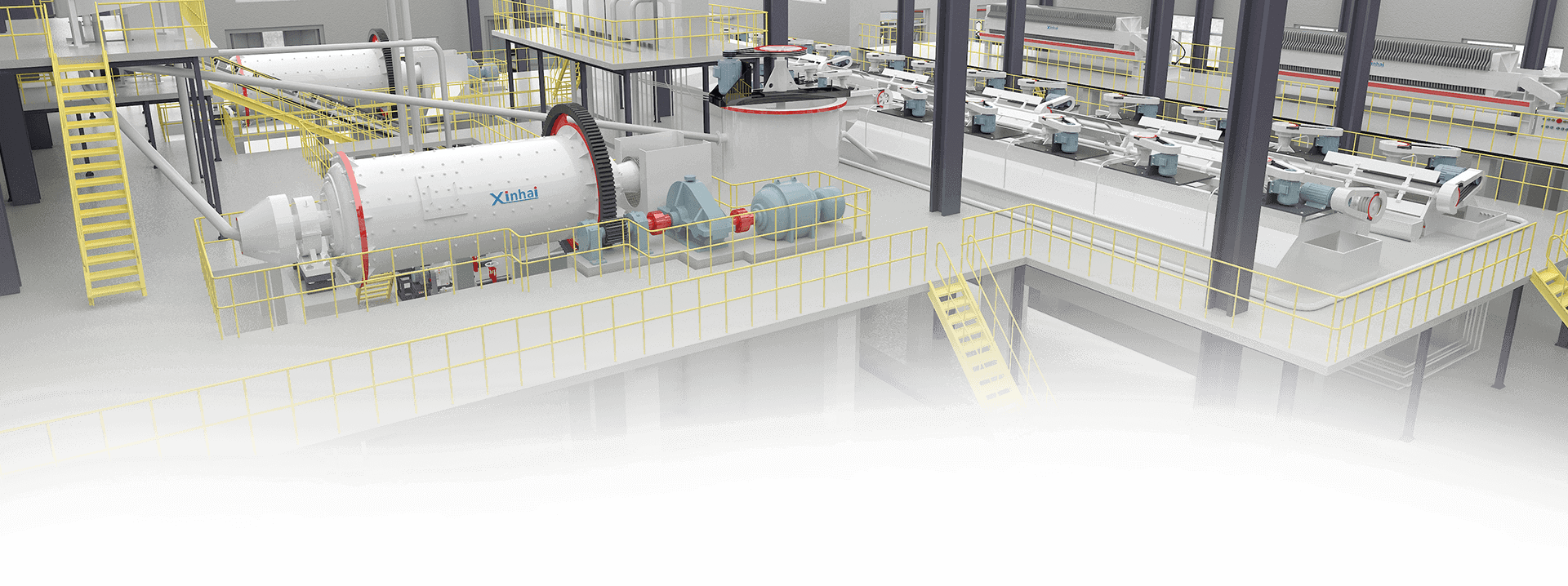
 Message
Message Chat Now
Chat Now


